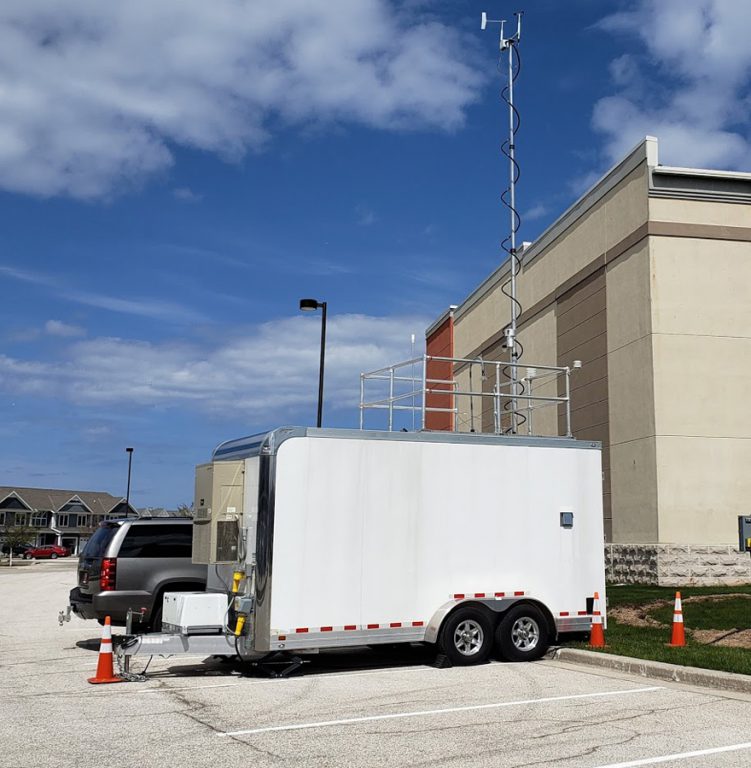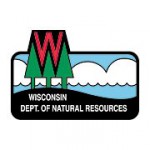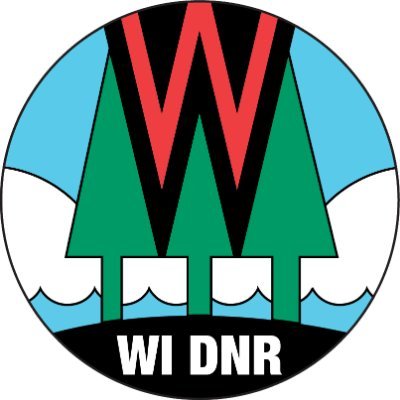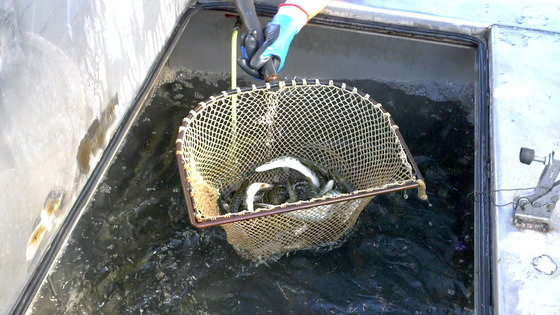Enhancing Ozone Monitoring Across Wisconsin

DNR’s Mobile Air Monitoring Lab (MAML) stationed along the Lake Michigan shoreline in Sheboygan County. / Photo Credit: Wisconsin DNR
MADISON, Wis. – Mobile laboratories, Raspberry Pi micro-computers, vertical air column monitoring and exploring the use of new, cutting edge techniques for potential monitoring sites are all part of the Wisconsin Department of Natural Resource Air Program staff’s exciting role using fundamental scientific principles, innovation and creativity to tackle the long-standing ground level ozone problem. As a nationally recognized leader in air quality monitoring, Wisconsin is paving the way for new monitoring techniques and tools; and people are watching.
What is ozone? The ozone that naturally forms in the earth’s upper atmosphere and protects earth from the sun’s harmful UV rays is the same chemical compound that forms at ground level. However, ground level ozone can have an adverse impact on human health.
The DNR monitors for ground level ozone at 30 stationary air quality monitors throughout the state from spring through fall. Information from these monitors is updated hourly and available for the public to view here.
Enhanced ozone monitoring in Wisconsin
The U.S. Environmental Protection Agency (U.S. EPA), through federal rules outlined in the Clean Air Act, requires Wisconsin to have an enhanced ozone monitoring plan that makes use of more advanced technology and goes beyond basic requirements for other less impacted locations.
Wisconsin’s Enhanced Ozone Monitoring (EOM) plan consists of using specialized equipment designed to provide data to help DNR experts to understand the unique chemistry behind ozone development that impacts Wisconsin, with a focus on counties along the Lake Michigan shoreline. The federal requirements of EOM plans are flexible, allowing states to determine what monitoring would be most useful to inform regulatory strategies aimed at addressing ozone pollution.
EOM tools
The first tool designed for EOM in Wisconsin is the Mobile Air Monitoring Lab (MAML), which spent the 2019 ozone season at two existing DNR monitoring sites; Chiwaukee in Kenosha County and Grafton in Ozaukee County. The MAML contains high tech instruments that provide extensive monitoring capabilities to understand ozone chemistry and differs from traditional air monitoring sites in that it is highly mobile and can be moved to new locations based on evolving knowledge from the EOM long-term data analysis. The MAML is spending the 2020 ozone season along the Lake Michigan shoreline in Sheboygan.
In addition to MAML equipment deployments, the DNR is partnering with the University of Wisconsin, U.S. EPA, Lake Michigan Air Directors Consortium (LADCO) and the National Aeronautics and Space Administration (NASA) on the use of Pandoras, ground level instruments with the ability to measure nitrogen dioxide (NO2) in the vertical column.
“The DNR is fortunate to be able to collaborate with local ozone experts with a common goal of reducing ozone concentrations across the state,” said Gail Good, Air Program Director.
EOM Data
Data from DNR’s EOM, the 2017 Lake Michigan Ozone Study and historical records are constantly studied and analyzed in support of program policy objectives. Current Air Management work includes looking at decades of precursor trends to determine if NOx and VOC ratios have changed over time, reviewing meteorological buoy data to see how overwater data relates to monitored ozone values, and assessing EOM VOC samples for trends.
“The unique changes in nitrogen oxide emissions throughout the region associated with the Safer-at-Home mandates may have been the result of significant reductions in automobile traffic beginning in mid-March, 2020,” Pierce said.
Stay informed
The DNR Air Program offers a free mobile app for the public to stay informed even while out enjoying Wisconsin. Users can download the WisconsinAQM app to receive air quality updates from anywhere using their mobile device. The app includes an interactive map of near real-time data from the state’s air monitoring network, individual monitoring station reports, weather information and more. Download in the Apple App Store or the Google Play Store.
For more information, citizens can also visit DNR’s Air Quality webpage.
NOTE: This press release was submitted to Urban Milwaukee and was not written by an Urban Milwaukee writer. While it is believed to be reliable, Urban Milwaukee does not guarantee its accuracy or completeness.
Mentioned in This Press Release
Recent Press Releases by Wisconsin Department of Natural Resources
DNR Seeking Public Comment On Master Plan Variance To Add Trailhead Shelter, Storage Facilities To Peninsula State Park
Jul 17th, 2025 by Wisconsin Department of Natural ResourcesPublic Comment Period Open Through Aug. 7
DNR Publishes 2024 Fish Stocking Summary
Jul 16th, 2025 by Wisconsin Department of Natural ResourcesOver 5 Million Fish Stocked Into Wisconsin Waters























